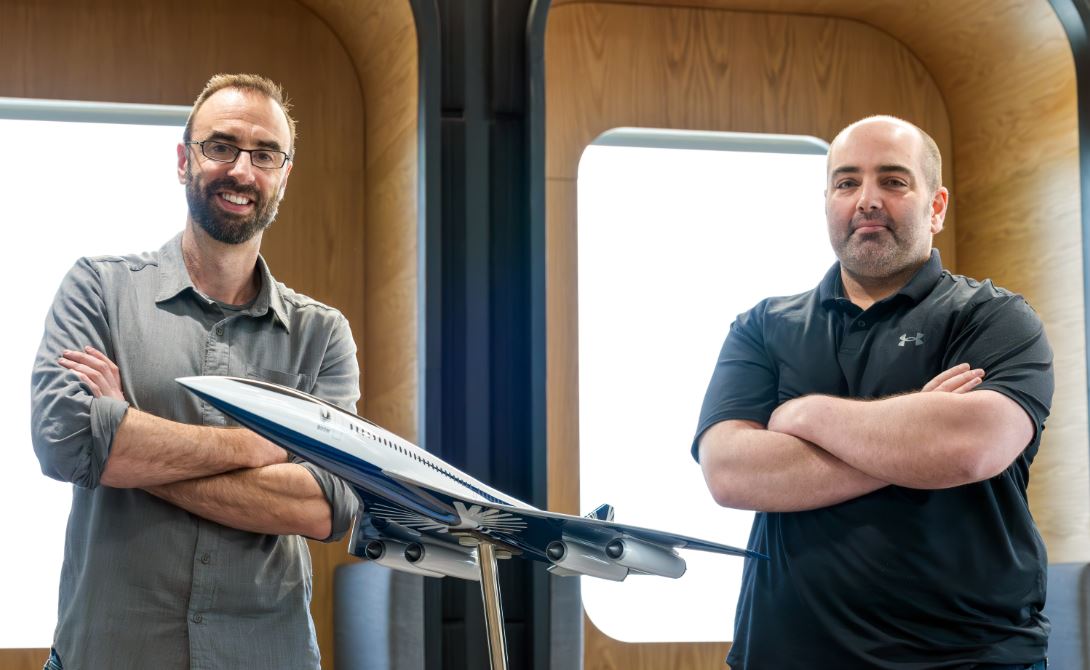ANNnews – Summary of Boom’s interview to our colleagues in Colorado.
11 April 2024
Boom is a company that is taking on one of the biggest challenges in the aviation industry: bringing supersonic flight back to the market. This task requires the best commitment and talent available. Aernnova, if for anything has been distinguished since its inception, is to provide a differential value in the most important projects of the aerospace industry in recent decades, and it seems clear that the paths of Boom and Aernnova were destined to cross in OVERTURE.
But this is not the first time Aernnova has collaborated with Boom. Between 2019-2020 we were working on the design of a composite partial fuselage panel for this same program (but for a completely different aircraft configuration). Currently, the part of the company that is most committed to Boom is Aernnova Engineering.
Iker Zalbide and Sergio Bonachela worked on the Aerion team for the AS2 program. They have very specific knowledge and lessons learned during the time they were working for this supersonic program that will be very useful for the OVERTURE project.
Iker has been part of Aernnova’s engineering team for more than 15 years, he has worked on different projects in the United States and is currently working as a stress engineer at Boom. His role is to serve as a link between Boom and Aernnova for all activities related mainly to stress engineering, but also for any other issue where he can be of help.
“My expectation is to be here until I see this incredible challenge become a reality. I hope to see the OVERTURE fly!
“The development of a supersonic aircraft is one of the biggest challenges an aeronautical engineer can face, a project that marks your professional career. It is without a doubt an incredible opportunity.”
Sergio works as a focal point mainly for design and integration issues. He will help with information transfer. He has been with Aernnova for 16 years.
Sergio is currently living in the USA and has a lot of experience accumulated from his career at Aernnova. He has worked on different projects such as the 747-8 and 787-9 for Boeing, Pilatus PC-24, Mooney M100, E-Fan-X for Airbus, Aerion AS2… all of them directly with the customer, as is the case with Boom.
“The experience of interacting directly with the client during the development of a project allows you to interact with many disciplines and actors that are often not accessible in your own home. From a professional and personal point of view, it is a very enriching experience.
Boom offers me the opportunity to work on the successor to Concorde, one of the most iconic airplanes ever made! Being part of this project will be one of the highlights of my career, without a doubt!”
ANNnews: What’s so special about the wings of a supersonic aircraft?
IKER: Like any aeronautical project, it requires a lot of time and the involvement of many different disciplines. In the design and development of the OVERTURE wing, the mission defines important aspects such as maximum speed, range or maximum take-off weight, which in turn condition the wing design in terms of wing area, airfoil and position.
Today, one of the biggest challenges is to find a good compromise between subsonic and supersonic speed wing design to obtain the highest efficiency.
SERGIO: The aerodynamic efficiency (drag ratio) of the wing I think is the most important criterion. Making sure that the wing can maintain structural integrity by being as light as possible would be the second one. You have to consider the number of systems to be installed (mechanical, EWIS, hydraulics, fuel, etc.), how they will be manufactured and assembled, the logistics of the whole operation, and the operational and maintenance requirements once in service.
Supersonic wings are fundamentally different from the subsonic wings of normal commercial aircraft in that they require a more aggressive shaft to help reduce the effects of supersonic shock waves. They have a number of cons: The overall wing span is usually reduced, which results in lower cruise efficiency (meaning the aircraft consumes more fuel) and they require high takeoff and landing speeds. Like everything in life, it’s a compromise.
Iker and Sergio are Aernnova references in Boom, as well as all the staff involved in this project from Aennova Engineering.




